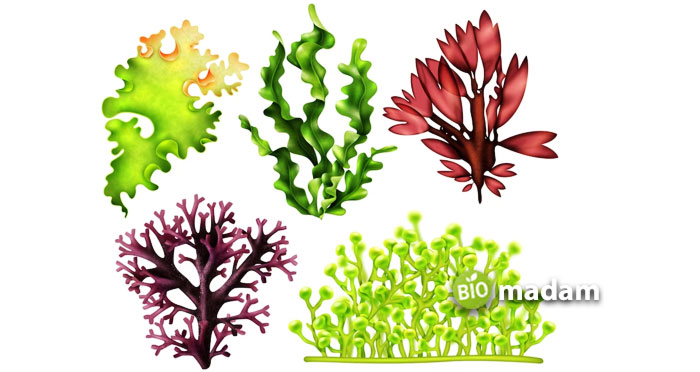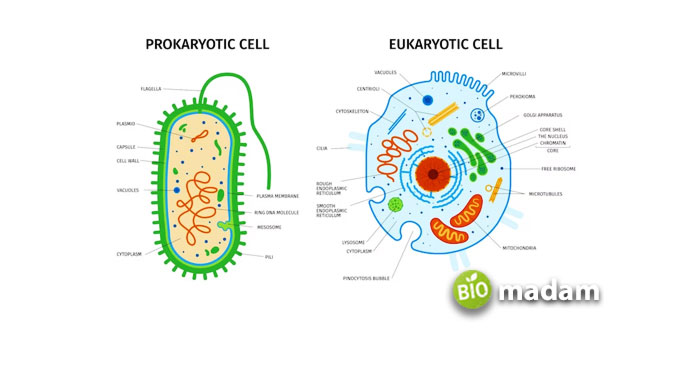All organisms, whether prokaryotes or eukaryotes are made of cells comprising different organelles. The structure of prokaryotes and eukaryotes is not entirely the same as prokaryotes are unicellular. Yet, they have some similar organelles, such as cytoplasm, ribosomes, and plasma membranes. Like prokaryotes, eukaryotes also have a cell wall. Yet, all eukaryotes do not have one.
This article brings you everything you need to know about cell walls in eukaryotes. Let’s dive into the details!
What are Eukaryotes?
Eukaryotes are organisms with eukaryotic cells containing membrane-bound structures. Multicellular organisms such as plants, animals, and humans are all eukaryotes, besides a few unicellular eukaryotes such as protozoa. Eukaryotic cells contain numerous membrane-bound organelles with specific functions. For example, the nucleus contributes to multiplication and division while ribosomes synthesize proteins. Eukaryotic cells also have double membrane-bound mitochondria that produce energy, while cilia and flagella act as locomotory organs. Furthermore, they contain the cytoskeleton that provides structure to the cell.
What is a Cell Wall?
A cell wall is the outermost layer in many cells, including plants, algae, and some fungi. While many organisms, such as animals, only have a cell membrane outside their cells, the cell wall supplements the cell membrane in a few others. The cell wall in plant cells acts as added support and provides rigidity to the cell.
The cell wall is a non-living component of the cell and is metabolically inactive. It covers the whole cell and is fully permeable, allowing all solutes and solvents to pass through. Thus, it does not prevent specific molecules from entering the cell.
Do Eukaryotes have a Cell Wall?
Yes, eukaryotes have cell walls, but not all of them.
Eukaryotic cells such as algae, plants, and some fungi have cell walls that support the structure of the cell and provide rigidity. Some prokaryotes, such as bacteria, also have a cell wall. However, the composition of cell walls varies in different organisms.

The plant cell wall is made of a network of cellulose microfibrils and glycans embedded in cross-linked pectin polysaccharides. At the same time, fungi cell walls comprise chitin, glucans, and two complex polysaccharides, whereas algae cell walls are hemicellulose, cellulose, and pectin.
Prokaryotic cell walls do not have chitin or cellulose. Instead, their cell walls comprise two layers:
- The inner layer of peptidoglycans
- The outer layer of lipopolysaccharides and lipoproteins
Some eukaryotes, like animals and most fungi, do not have a cell wall, so you do not hear a crunch when you bite into meat. The cell wall gives the cell a crunchy feel, such as in celery, kale, carrots, etc.
How are Cell Walls and Cell Membranes Different?
While cell membranes and cell walls apparently perform a similar function of differentiating the cell’s internal environment from the external, they are quite different. Some of the major differences between cell walls and cell membranes are:
| Characteristic | Cell Wall | Cell Membrane |
| Presence in Eukaryotes | Absent in animals | Present in all eukaryotes |
| Placement | Outermost in plants, algae, and some fungi | Outermost in animals |
| Visible Under | Light microscope | Electron microscope |
| Thickness | Thick layers | Thin layers |
| Composition | Same in all cells | Differs in plants, fungi, algae, and prokaryotes |
| Permeability | Completely permeable | Selectively permeable |
| Metabolic Activity | Inactive | Active |
| Type of Organelle | Non-living | Living |
| Growth | Grows throughout life | Stays the same |
Other Organelles in Eukaryotes
Besides cell membranes, eukaryotic cells have many other membrane and non-membrane-bound organelles, such as:
- Cell membrane
- Cytoplasm
- Nucleus
- Mitochondrion
- Endoplasmic reticulum
- Golgi apparatus
- Vacuoles
- Vesicles
- Chloroplasts
- Plastids
- Peroxisomes
- Cilia
- Flagella
- Centriole
- Ribosomes and lysosomes

How are Prokaryotic and Eukaryotic Cells Similar?
Besides the presence of a cell wall, prokaryotes and eukaryotes have a few more similarities. Eukaryotic and prokaryotic cells have similar organelles, such as DNA, cytoplasm, ribosomes, and cell membranes. Their cytoplasm comprises cytosol and contains all the important organelles dispersed in the fluid. The plasma membrane protects the cell from the outside environment, while the genetic material in the form of DNA facilitates multiplication.
The Bottom Line
Eukaryotes comprise most organisms, including plants, animals, fungi, algae, etc., made of different eukaryotic cells. Now, if you wonder, “Do eukaryotes have a cell wall?” Yes, they have a cell wall, but not all of them. Animals have the cell membrane as the outermost layer, whereas plants, fungi, and algae have the cell wall outside the cell membrane; some prokaryotes also have a cell wall. It provides a barrier between the internal and external environment and provides rigidity.
FAQs
Why do eukaryotes not have cell walls?
Eukaryotes such as plants, fungi, and algae have cell walls to provide a rigid structure and shape to the cell. However, out of all eukaryotes, animals do not have cell walls. The cell membrane is the outermost organelle in animal cells.
What makes up the cell wall of eukaryotes?
The cell membrane of eukaryotes is made of cellulose or chitin, depending on the type of organism. Plants have cellulose in their cell walls, while fungal cell walls comprise chitin and glucans.
Which cells have cell walls?
Organisms like plants, some fungi, most bacteria, and algae have cell walls. Heterotrophic animals and protists do not have cell walls.
What does a eukaryotic cell contain?
Eukaryotic cells contain numerous membrane-bound and non-membranous organelles performing specific functions. They have cytoplasm, ribosomes, plasma membrane, nucleus, Golgi Apparatus, endoplasmic reticulum, mitochondria, etc.

Hello, I would like to introduce myself to you! I am Chelsea Rogers, an experienced blog writer for science articles, holding an MPhil degree. My enthusiasm to grab the best knowledge, let it relate to botany, zoology, or any other science branch. Read my articles & let me wait for your words s in the comment section.

